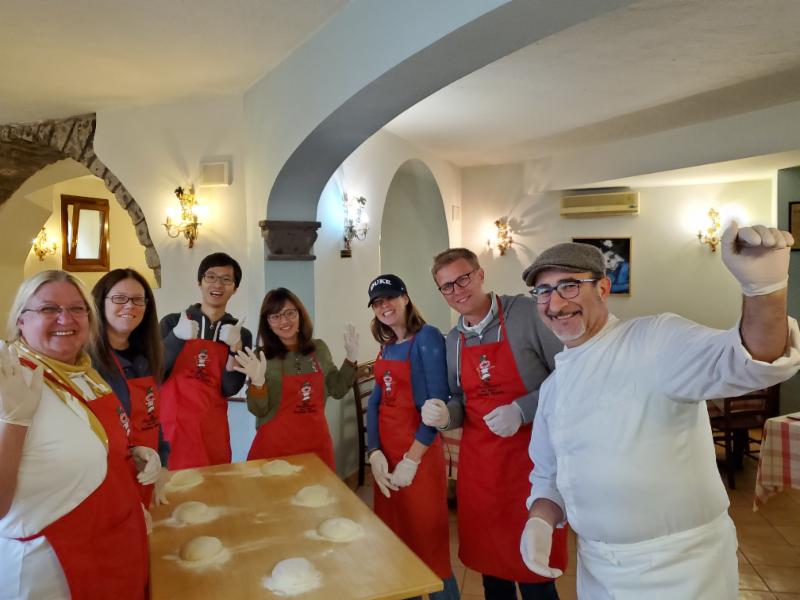
During my recent trip to Sicily, Prague and Belgium, I went on several food tours. I have found food tours can be a fun and interesting way to get to know an area as well as the food that is unique to the area. So, of course, when in Italy, what better than to have a food tour and make your own pizza! We sort of participated in making limoncello as well which is always a great taste to include on a tour, and we definitely made chocolate treats on a chocolate tour in Brussels.
Each time an activity was included, it added a new twist to the food tour. Isn’t that true with work as well? If you want someone to learn a concept, develop an exercise or a way for him/her to participate. Since returning, I taught a CSCP (certified supply chain professional) class at the Target distribution center and another class with just two students at the University of LaVerne yet we had interesting interactive discussions. The students brought up real world examples to participate and relate the concepts to everyday work scenarios and gain immediate advice on a few issues. Bringing concepts to life with active participation is much more memorable than just talking or droning on about a topic. How can you bring concepts to life at work?

One tip to implement this week:
Think about how to build clarity and build participation into your conversations, presentations and discussions. As Jerry Seinfeld says, “I will spend an hour taking an eight word sentence and editing it down to five.” Similarly, I’ve noticed it might take our team at least that long to distill one key concept into a graphic. It is well worth it though if the point is clearly communicated and our recommendation is understood and supported. In this case, think about how to engage your team, audience or client to participate in the solution. Not only will they understand it much better but they also will be aligned with it!
There is an art to developing participation exercises that will engage the audience while achieving your end outcome. I find it much harder than it appears. Ask your favorite speakers, educators and leaders how they do it. Take note when someone does it well. How do they introduce the exercise? How do they engage the team? Do they tie the results to the next topic or business need? Little things go a long way. For example, try making your exercise relevant to the audience. When explaining the importance of bills of material for a clay company, we used play dough to make some simple items (thanks to my colleague
Diane Garcia for that great idea!). I’d love to hear your ideas for successful participation.
May 28, 2019




